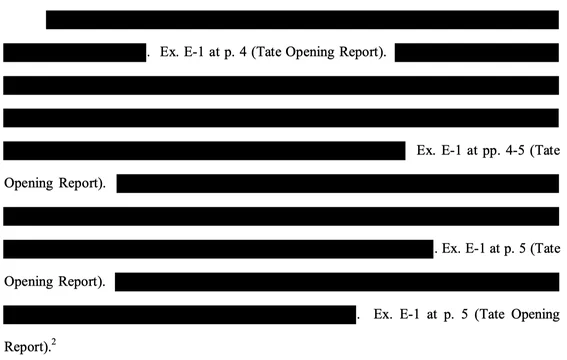
We've talked before about how the free ride on sealed filings is starting to end. Late last week, we got another reminder of that from Chief Judge Connolly.
In WSOU Investments, LLC v. SalesForce, Inc., C.A. No. 23-27-CFC (D. Del. Feb. 23, 2023), one of the parties filed a "motion for leave to file under seal" some of its briefing, exhibits, and—notably—its Rule 7.1 statement.
The case is a small miscellaneous action seeking to compel discovery relating to a W.D. Tex. patent action.
In response to the motion for leave to file under seal, Chief Judge Connolly elected to review all sealed filings on the docket. He went so far as to follow up with the judge in the underlying W.D. Texas action:
WSOU's motion for leave to file under seal prompted me to review all the filings the parties have maintained under seal to date.
I started with the parties' briefs (D.I. 3; D.I. 16; D.I. 20); and, because the parties justified the sealing of those briefs in part because the briefs quote from a sealed discovery hearing conducted by Judge Gilliland in the Western District of Texas, I shared copies of the briefs with Judge Gilliland to get his views on the appropriateness of maintaining the briefs under seal. I determined, and Judge Gilliland agreed, that no good cause exists to maintain the briefs under seal.
He then unsealed all of the filings associated with the briefs, other than a transcript of a sealed discovery hearing in the related action:
I then turned to the exhibits the parties filed with their briefs. Both sides filed as an exhibit the sealed transcript of Judge Gilliland's discovery hearing. See D.I. 17-10; D.I. 21-6. Judge Gilliland had sealed the transcript at the joint request of the parties. Because he has yet to unseal it, I will maintain the transcript exhibits under seal.
I see no basis to keep under seal any of the other exhibits filed by WSOU (D.1. 17-1; D.I. 17-2; D.I. 17-3; D.I. 17-4; D.L 17-5; D.I. 17-6; D.I. 17-7; D.I. 17-8; D.I. 17-9; D.I. 17-11; D.I. 17-12; D.I. 17-13); nor do I see any good cause to maintain under seal Exhibits 1-4, 7-11, 17, and 20-29 filed by Salesforce in support of its motion (D.1. 21-1; D.I. 21-2; D.I. 21-3; D.I. 21-4; D.I. 21-7; D.I. 218; D.I. 21-9; D.I. 21-10; D.I. 21-11; D.I. 21-17; D.I. 21-20; D.I. 21-21; D.I. 21-22; D.I. 21-23; D.I. 21-24; D.I. 21-25; D.I. 21-26; D.I. 21-27; D.I. 21-28; D.I. 21-29). Accordingly, I will unseal these exhibits.
For the settlement agreements, he asked the parties to file redacted versions, and provided some guidance on what can remain sealed:
Salesforce's remaining exhibits consist of a settlement agreement (D.1. 21-5) and seven LLC operating agreements (D.I. 21-12; D.I. 21-13; D.I. 21-14; D.I. 2115; D.I. 21-16; D.I. 21-18; D.I. 21-19). These documents lie at the heart of the parties' dispute before me. No good cause exists to seal these documents in their entirety, but good cause exists to seal bank account and taxpayer identification information contained in the documents and good cause may exist to maintain under seal certain dollar amounts (but not ownership percentages). Accordingly, I will give the parties ten days to submit proposed redactions to these exhibits.
The Court once again explained it's "star chamber" rationale:
The District Court is not a star chamber. We are a public institution in a democratic republic and the public has a right of access to our filings and proceedings. That right is founded in the common law and "antedates the Constitution." Bank ofAm. Nat'/ Tr. & Sav. Ass 'n v. Hotel Rittenhouse Assocs., 800 F.2d 339, 343 (3d Cir. 1986). The public's right of access is not absolute; but it is strongly presumed, and it can be overcome only if a party demonstrates that public disclosure of a filing will result in " a clearly defined and serious injury." In re Avandia Mktg., Sales Pracs. & Prod. Liab. Litig., 924 F.3d 662,672 (3d Cir. 2019). Public disclosure that an individual has an ownership interest in an entity created by a state cannot be said to constitute an injury. Corporations and LLCs may offer individuals protection from liability, but they don't entitle individuals to anonymity in court proceedings. "The people have a right to know who is using their courts." Doe v. Blue Cross & Blue Shield United of Wis., 112 F.3d 869, 872 (7th Cir. 1997) (Posner, J.).
In the end, of the items the Court considered, only the discovery transcript will remain fully sealed. (It looks like there were two early declarations, D.I. 4 and 5, that the Court did not specifically consider and may remain fully sealed.)
Panic Ensues
The Court seems to have immediately unsealed some of the documents, but not others. The same day, the patent assertion entity filed an unopposed motion to stay the unsealing of some of the remaining items for two business days to allow the parties to seek further relief. The Court granted that motion.
So, What's in the Unsealed Papers?
The parties had previously filed a redacted version of the opening brief in support of the motion to compel. The redactions seem to relate—unsurprisingly—to any information that came from the patentee's side's public documents.
A copy of the brief with the formerly-sealed information highlighted is attached below, to give an idea of what the Court found unsupportable.
Most of the sealed information comes from a confidential license agreement, or relates to facts surrounding ownership and control of various patent assertion entities that are involved in a campaign against Salesforce right now:

Check out the full brief below if you're curious to see what kind of information is not protectable.
If you enjoyed this post, consider subscribing to receive free e-mail updates about new posts.





